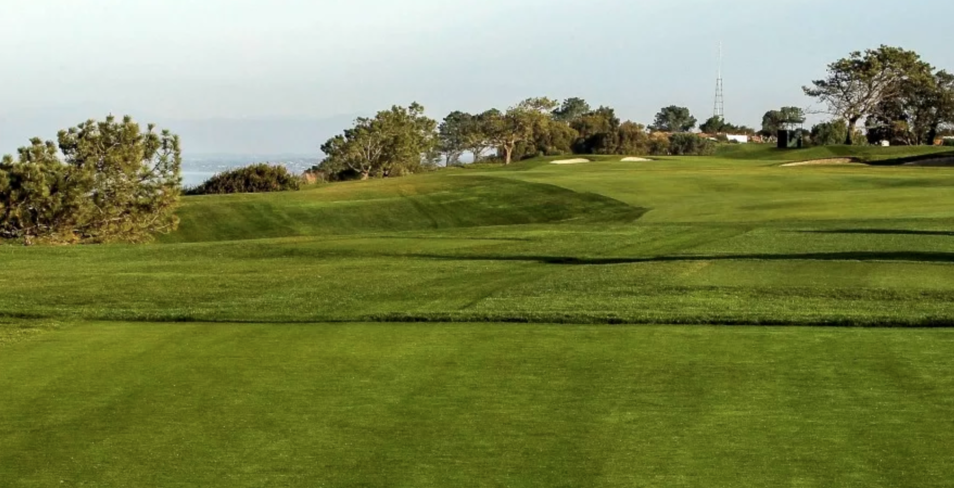A mulligan for Torrey Pines
The USGA announced that they would be bringing back Rees Jones to make improvements to Torrey Pines preceding the 2022 U.S. Open. It was a disappointing announcement given that Jones already tried (and failed) to improve the venerable property in 2002. Before the 2008 U.S. Open, he narrowed fairways and installed deep bunkers across the course. He succeeded in creating a difficult test of golf – but failed almost entirely to inject any strategic interest into this beautiful property.

The par 4 4th at Torrey Pines - Photo Credit: PGATour.com
Let’s take a look at the par four fourth at Torrey Pines South Course. It’s a long, tough hole that runs along the cliff. Measuring 488 yards, the fourth regularly ranks among the most difficult holes on Tour. Perched upon the Pacific Ocean cliffside, this is one of the most scenic spots in all of golf. Virtually any architect would immediately recognize that the cliff is an intimidating, natural hazard.
This hole is built like someone decided NOT to turn in a winning lottery ticket. For some reason, this fairway currently sits 15 yards inside the cliffside. Thick rough catch wayward drives stopping them from rolling off the cliff. In the 2018 Farmers, only ten tee shots found their way over the edge. Imagine having an incredibly beautiful, natural hazard and deciding: “Eh – let’s stay away from that.”

Two bunkers sit right of the 27-yard fairway and run from 275-325 yards from the back tee box. Guarding the green is thick rough and a deep front bunker. A small kicker slope sits short and right of the green and funnels balls hit there close to the green edge. This hole has a single strategy: hit the narrow 27-yard fairway.
So far this week the 4th has yielded a meager 22 birdies, 14 of which have come from players who played right of the center of the fairway. Playing away from the Pacific Ocean gives players the benefit of a better angle. Yes, I repeat the hole’s design rewards players who play away from the cliff.

Here is how I would change the 4th:
- Expanded fairway stretching to some 70 yards wide in some areas.
- New fairway bunkers which angle into the fairway and narrow the landing area for professionals.
- A new green site located against the edge of the cliff which slopes from right to left with the natural land movement.
- Two green side bunkers positioned on the front right and back right of the green.
This is not just better land use: It’s a smarter, more strategically interesting golf hole. Widening the fairway would make the intimidating cliffside the focal point of the hole – particularly since the land slopes from right to left from the tee through the green. By stripping away all that rough on the left, the cliff is in play.
Off the tee, the ideal line hugs the left side of the fairway. It would create the ideal approach to the long and narrow green complex. But it’s a risk-reward situation: too far left is death.
Bailing to the right is an option, but the fairway bunkers loom. Worse yet, the angle to attack the narrow green that runs away from players is poor. Making a birdie on the right side would require a spectacular golf shot.
These changes would make the fourth a terrific golf hole that embraces the natural land. It would become a more strategic and possibly a more difficult golf hole for today’s modern professional golfer. Meanwhile, the wider fairway would yield a more playable hole and thrilling experience for the everyday golfer. There are at least a dozen holes at Torrey Pines that could be improved in strategic nature. Let’s hope in the 16 years since Rees last worked on Torrey Pines he has learned a little bit about strategic and natural design. If he hasn’t, I would urge him to study some great strategic long par-4s such as the 18th at Sand Hills or St. Andrews Road hole 17th.


 by
by 
